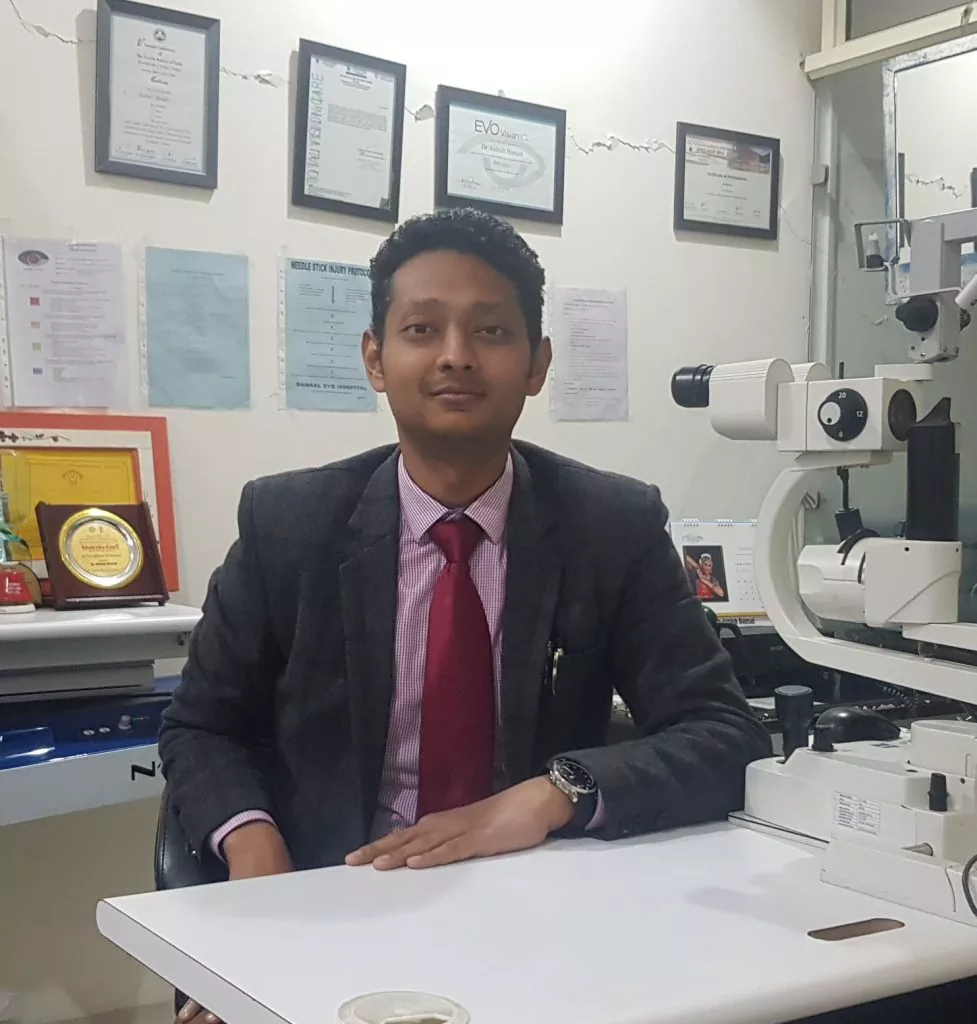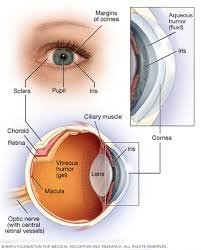Corneal Transplant Surgery Specialist

Corneal Surgery, Laser Vision Correction
Qualification
Consultant Cornea, Lasik and Phaco
Completed his MBBS from Govt. Medical College, Chandigarh
Obtained MS from prestigious PGI, Chandigarh.
About
He also did F.R.C.S from Royal college, Glasgow, London. He Did Superspeciality fellowship in Cornea, Ocular surface & Refractive surgery under renowned Dr SK Rao of the SANKARA NETRALAYA, CHENNAI. During his training he observed and performed all complex cases of cornea and ocular surface like all types of cornea transplants( PK, DALK& DSEK), keratoprosthesis, amniotic membrane grafting, mucous membrane grafts, complex pterygiums, Dry eye treatment etc.
He also worked as Chief eye surgeon for 2 years at the Lions International charitable Eye hospital where he performed thousands of cataract surgeries with latest Phacoemulsification technique. He was awarded certificate of merit in the subject of Ophthalmology in his under graduation from the then Prime Minister Mr. Manmohan singh.
Corneal Transplant Eye Surgery Corneal Blindness treatment | आँखो की पुतली बदलने की सर्जरी
Cornea Transplant Eye Surgery Corneal Happy Patient Review In Punjabi-आँखो की पुतली बदलने की सर्जरी
Cornea Transplant

What Is a Corneal Transplant?
When associate injury or malady damages your tissue layer, a transplant is also able to restore or dramatically improve your vision.A transplant is associate patient procedure. Most corneal transplants have a positive outcome, and success rates square measure rising as techniques and coaching strategies improve. The tissue layer is that the clear, dome-shaped surface of the front of the attention. The tissue layer along side the subsequent helps defend your eyes from dirt, germs, and foreign particles –
- eyelid
- eye socket
- tears
- white elements of the attention, or sclera.
Who is a Cornea Transplant for ?
A healthy cornea – the transparent, dome-shaped surface of your eye – is an essential component of sharp, clear vision. It accounts for a large part of your eye’s focusing power. Any condition that distorts your cornea or diminishes its transparency can harm your vision – sometimes severely. One treatment option may be a cornea transplant (also known as keratoplasty).
Cornea transplants are one of the most common organ and tissue transplants performed in the world. Find out who might benefit from a cornea transplant and what’s involved in the procedure.
How is a Cornea Transplant done ?
In a cornea transplant, a surgeon replaces a portion of your cornea with a different one from a donor. Donor corneas (grafts) become available when families donate the eyes of a deceased loved one. Just about anyone can donate corneas and, unlike other organ and tissue donations, there usually isn’t a long waiting list for people who need cornea transplants. Before surgery you’ll receive a sedative, which means you aren’t asleep during the procedure. Some people drift off during surgery and don’t remember the procedure afterward, while others stay aware of their surroundings and can communicate with the surgical team. Either way, you won’t feel any pain because your eye is completely numbed with a local anesthetic. Though you won’t be able to see the surgery being performed on your eye, you may notice when the surgeon moves instruments in and out of the light in front of your eye.
In the most common type of cornea transplant – called penetrating keratoplasty – your surgeon cuts through your entire cornea to remove a small button-sized disc. An instrument that acts like a cookie cutter, called a trephine, makes this precise circular cut. The donor cornea, cut to fit, is placed in the opening. Your surgeon then uses a fine thread to stitch the new cornea into place. The stitches are removed at a later visit to your eye doctor. The entire surgery takes about an hour, depending on your individual condition. You’ll receive a protective shield to wear over your eye. Wearing the shield will make your eye more comfortable as you recover and will protect your eye from accidentally being bumped.
With some types of cornea problems, a full-thickness transplant isn’t always the best treatment. Partial-thickness (lamellar) transplants may be used in certain situations. Deep lamellar transplant: This transplant replaces only the innermost of your cornea’s five layers. A small incision is made in the side of your eyeball to allow for removal of your cornea’s inner layer without injuring the outer layers. A donor graft replaces the removed portion. This procedure is helpful in faster recovery with less sutures and is increasingly being performed by corneal surgeons. Cornea Services at retina Foundation were the first in the state to perform this procedure also called as DSEK ( Descemet’s Stripping Endothelial Keratoplasty).
Risks Factors OF Cornea Transplant

Cornea transplant may be a comparatively safe procedure. Still, it will carry atiny low risk of significant complications, such as-
- Eye infection
- Increased risk of vaporization of the eye’s lens (cataract)
- Pressure increase among the eyeball (glaucoma)
- Problems with the stitches used to secure the donor cornea
- Rejection of the donor cornea
- Swelling of the cornea

Signs and Symptoms of Cornea Rejection
In some cases, your body’s system might erroneously attack the donor cornea. this is often referred to as rejection, and it should need medical treatment or another cornea transplant. Make an arrangement along with your ophthalmologist if you notice any signs and symptoms of rejection, such as
Loss of vision
Pain
Redness
Sensitivity to light-weight
Frequently Ask Questions
Make arrangements to have someone accompany you home after surgery, since you may be groggy. Tell your doctor about any medications you’re taking – prescription or over-the-counter – and ask if you should stop taking some or all of them before the surgery. Finally, follow your doctor’s instructions on drinking or eating before the procedure.
After surgery you’ll be taken to a recovery room to rest for an hour or so until you’re ready to go home. It’s important to wear the protective shield over your eye until your doctor says you can safely remove it – generally within three days of surgery.
You’ll receive eyedrops to control swelling and guard against infection. If your eye feels dry, talk to your doctor about using artificial tears. Never rub or put direct pressure on your eye.
You’ll meet with your eye doctor the next day to check the status of your eye and to look for postoperative problems. Expect to visit your eye doctor every week or two for the first month after surgery and then every two weeks for about three months. It takes about a year for your eye to heal completely.
Until your eye heals, take precautions to keep your eye safe from injury. For at least the first month after surgery:
- Shield your eye. Wear glasses or a patch during the day. Wear your protective shield at night.
- Keep water out of your eye. Wear your protective shield when you shower or wash your hair.
- Avoid dust and sand. These particles can irritate your healing eye.
- Reduce pressure on your eye. Take a break from activities such as exercising, dancing or jogging to avoid putting excess pressure on your eye. Avoid lifting heavy objects.
Move slowly and carefully since your vision may be altered temporarily as your eye heals. When you can return to work depends on what your job involves. Office workers may be comfortable going back to work in a week. Wait six to eight weeks before returning to a manual labor job
Cornea transplants are relatively safe and have been performed for many years. But, like any surgery, cornea transplants carry the risk of complications. Common signs and symptoms that might represent complications include :
- Decreased vision
- Increased reddening of your eye
- Pain
- Sensitivity to light
- Light flashes or floaters
If any of these symptoms develop and persist for more than six hours, call your eye doctor immediately. Prompt treatment is essential. Without treatment, complications can lead to the need to replace your transplanted cornea.
Though rare, serious complications can occur, including :
- Infection
- Wound problems, such as a broken stitch, which can be uncomfortable and impede healing
- Imperfections on the outermost layer of the cornea, which can cause haze or scarring
- Bleeding
- Swelling in the front of the eye, including inflammation of the iris (iritis)
- Glaucoma – abnormally high pressure inside your eyeball, which can lead to optic nerve damage and vision loss
Follow your ophthalmologist’s directions about your medications and follow-up appointments. Careful adherence to these directions will help prevent complications and allow for early treatment of any problems that might arise.
About one in five people undergoing cornea transplant eventually reject the donor cornea, making it necessary to transplant another one. Rejection most often occurs within the first year after the transplant. Your ophthalmologist may recognize the early signs of rejection and be able to modify your therapy to prevent rejection
To know the exact cost of C3R Eye LASIK and other Laser eye procedures that we have at our LASIK centre, Please fill the form or Call Our Customer Care. +919050636540, +919812183285.
